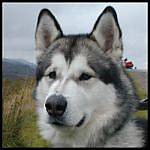Quoted Text
I suspect that the trim tab was merely a visible symptom of a much more serious malfunction. The accident review board will have to complete their investigation before it can be discussed intelligently. Any specultation before that would be both meaningless and counter-productive.
I think the "merely visible symptom" part is quite possible, and a very sound way of looking at it in any case...
Less well known at this (early) time is that the aircraft appeared to be smoking a little earlier in the race, whatever it may mean:
http://bloximages.chicago2.vip.townnews.com/billingsgazette.com/content/tncms/assets/v3/editorial/3/9b/39b5462d-106d-534f-9fb1-4b5bddc864e1/4e7522fce75ed.image.jpg From HS thread:
http://www.network54.com/Forum/149674/thread/1316298872/Galloping+Ghost+speculations. Some of the speculation in that HS thread is clearly wrong: At high speeds, engine torque has little effect, and would be pulling to the LEFT in any case... And it would be an effect on roll mostly... At high speed, the flight assymetry is no longer engine torque related, and is reversed in direction from middle speeds onward: The high speed assymetry is caused instead by the increasingly violent spiralling airflow over the center wing portions and fuselage, this generated by the prop's blades and thus not the hub's torque, and this in the OPPOSITE direction to the engine torque, whose effect is diminishing with speed... Torque is a mechanical action/reaction effect, worsened in a throttle change, while the prop spiral is aerodynamic and speed-related in nature...
This can be seen in that, in most if not all right-hand turning propeller WWII single engine fighters (looking from behind), the faster roll rates at lower speeds are to the LEFT, but that reverses itself to the RIGHT above around 200-250 MPH. The differences are significant, especially at low speeds, but largely depend on the type for the amplitude: 10 to 30 degrees per second out of 60 to 90 in total usually... The Hellcat is a good example of that, in a roll rate chart I saw, as are the Gryphon-engined Spitfire Mk XIIs and XIVs, while the P-51D is known as a bit more symmetrical than most other US WWII fighter types in roll behaviour at higher speeds, as seen in the 1989 SETP test. It is however famously assymetrical at low speeds: Running it up to full power at 150 MPH will tilt it fully to the left, even with the ailerons fully deflected to the right!
I cannot count the number of times I have heard WWII, or Warbird, pilots confuse the two assymetrical effects, and thus speaking of "engine torque" at high speeds (250 MPH +)...
Gaston
























